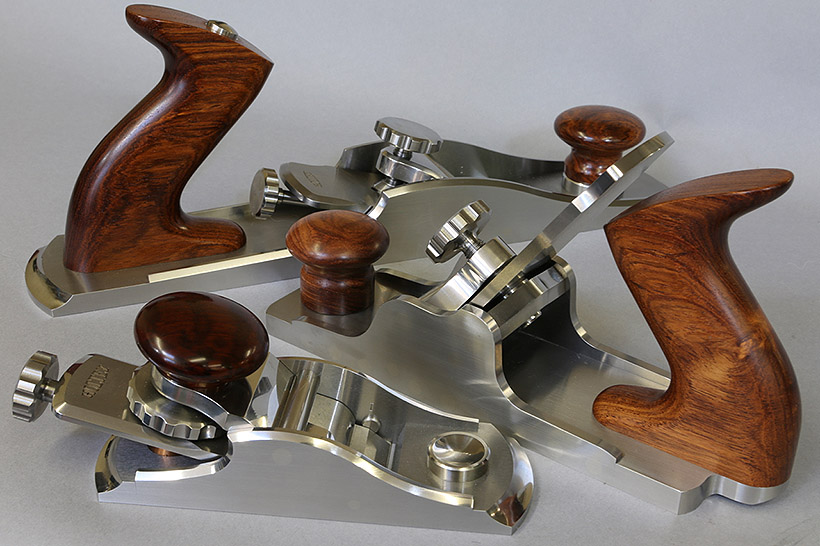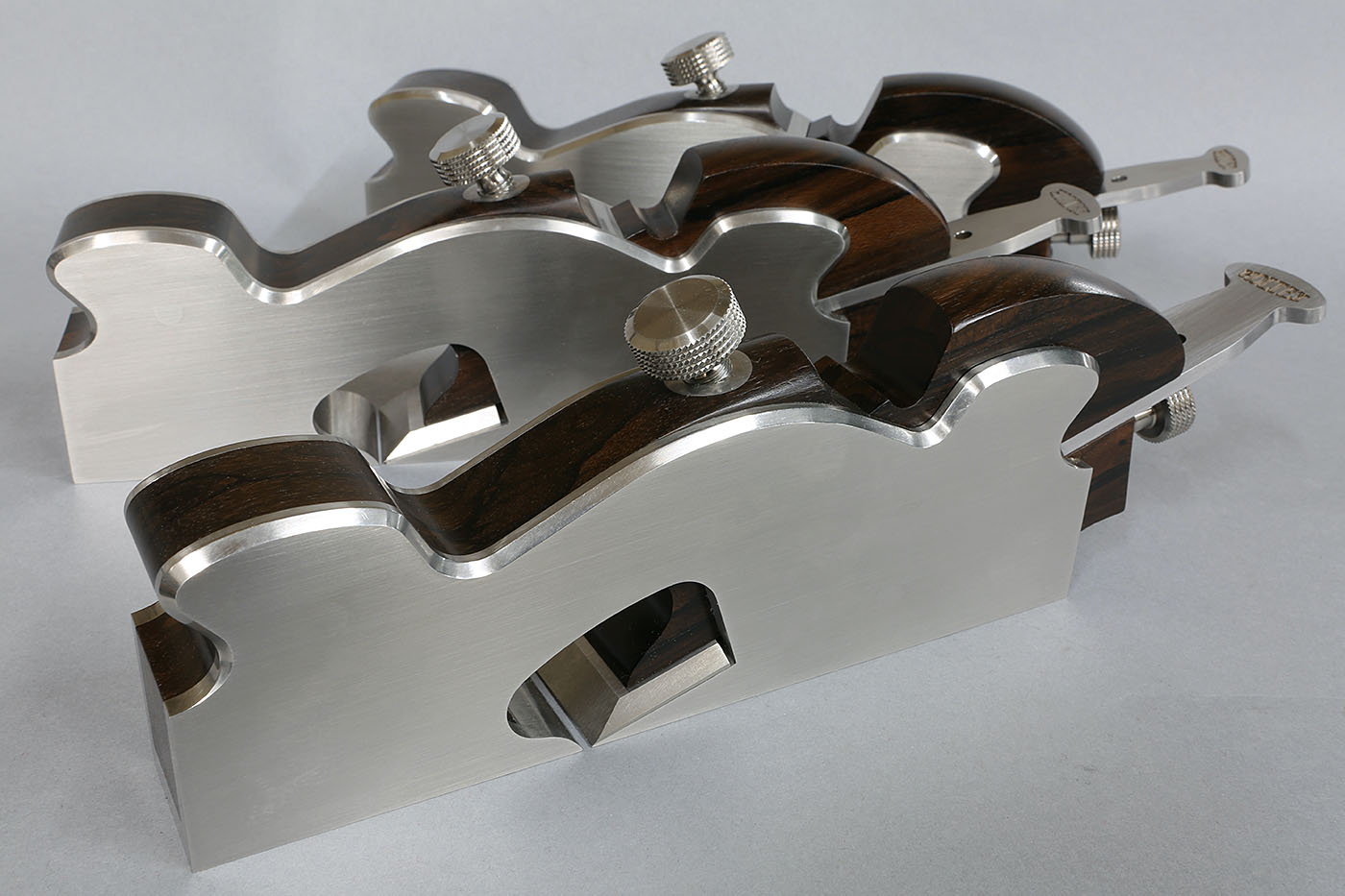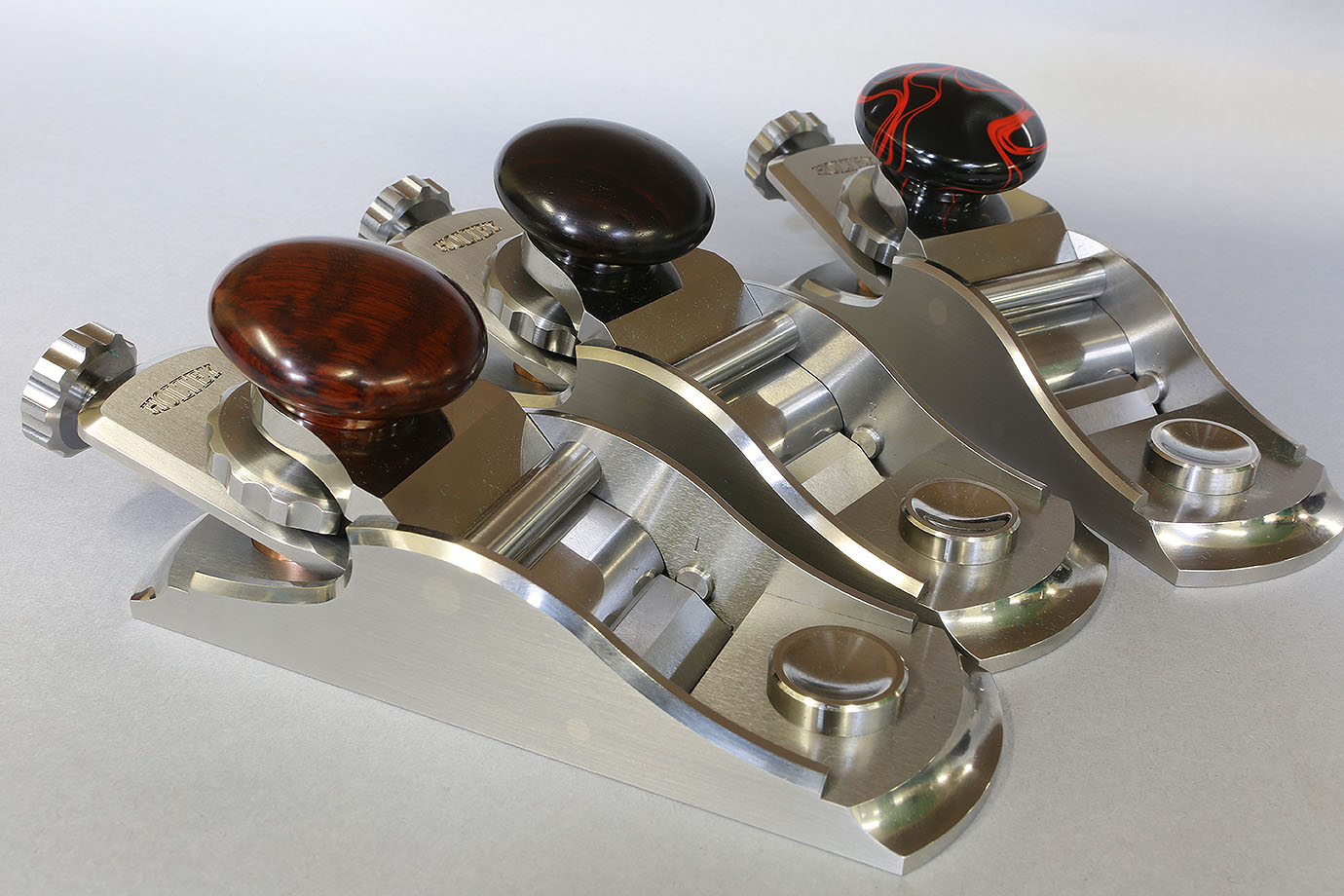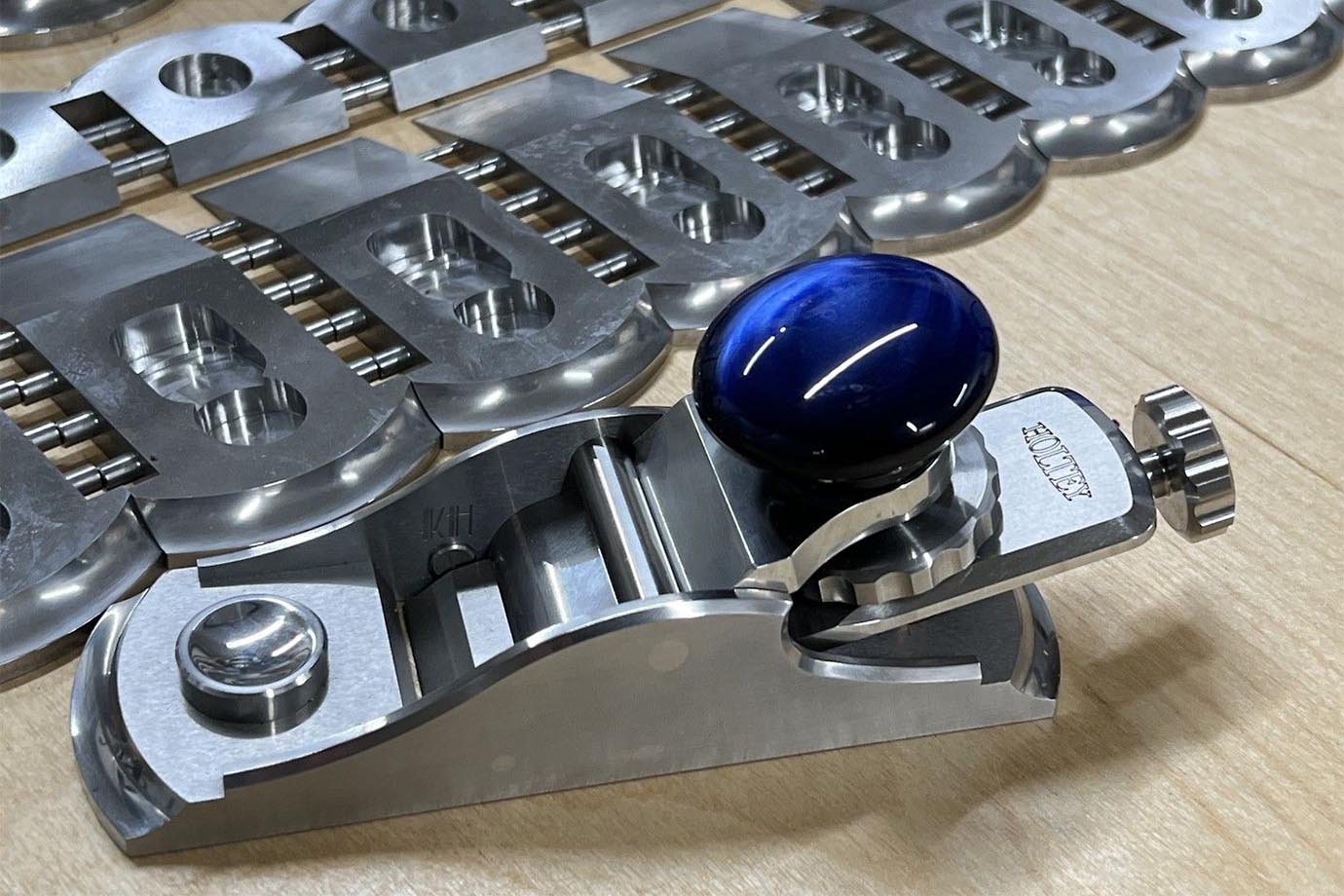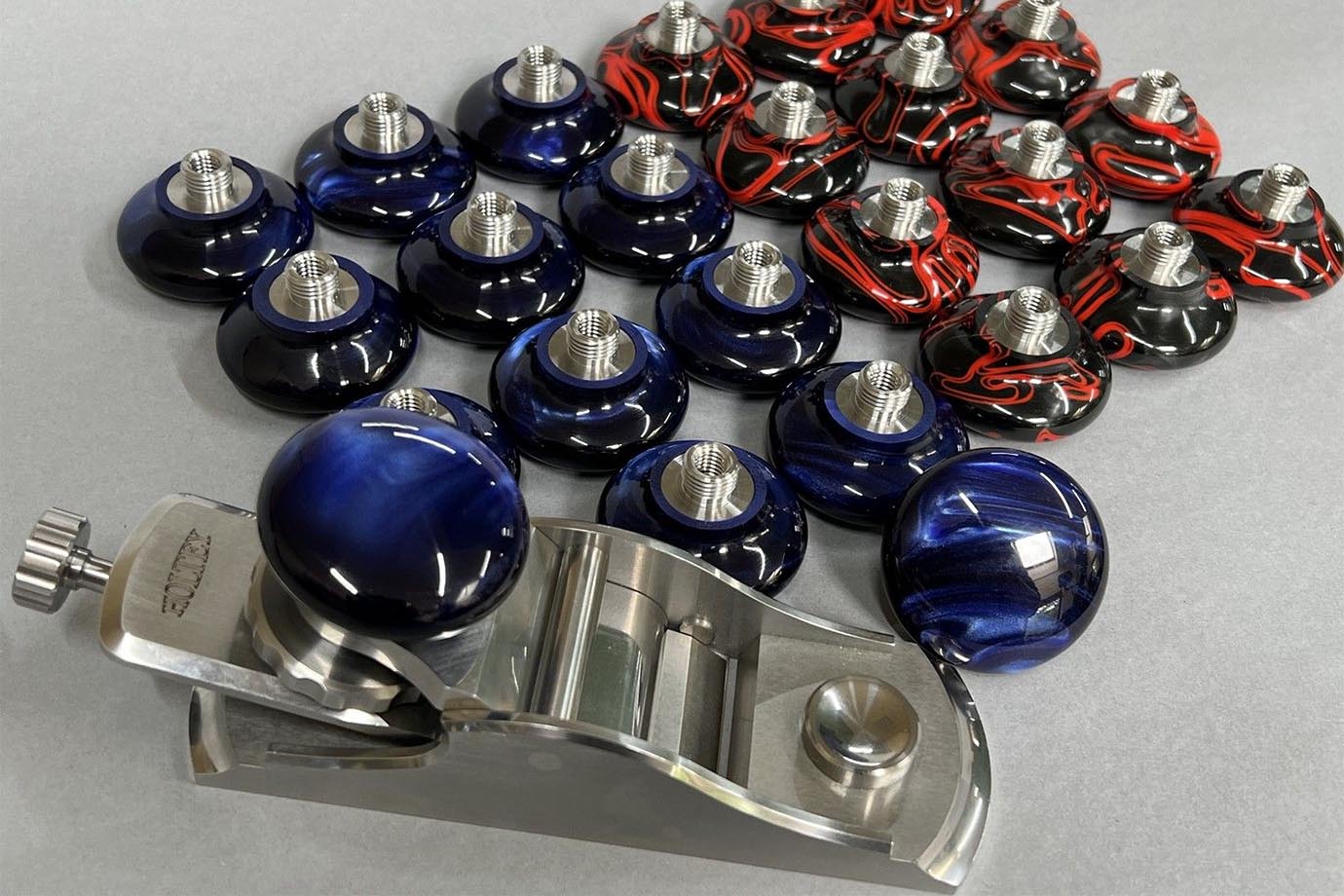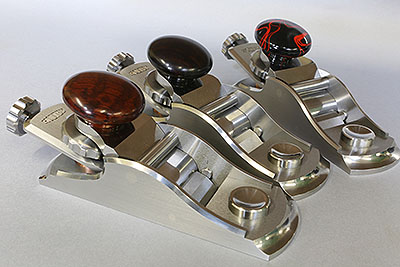
Holtey Classic Hand Planes
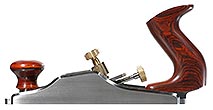
“He who works with his hands is a labourer.
He who works with his hands and his head is a craftsman.
He who works with his hands and his head and his heart is an artist.”
- Francis of Assisi.
pa.jpg)
No.986 - a new low angle smoother.
The No.986 smoothing plane has been ongoing for 18 months now, exploring many variants along the way. I now have my final layout with work already started. Orders can be placed with a 20% deposit.
The plane sole is 10.5” plus a 7/8” overhang for the handle, which supports a bevel up 2 1/4” x 3/16” A2 blade to my original recipe, on a 22 degree bed as in most traditional mitre planes. The chassis material is a martensitic chromium stainless steel, designated 1.4034, popularly known as AISI 420. Overall weight is estimated to be 2.5 kilos. This will be almost bomb proof and with the acrylic handle will be impervious to all the elements except fire and chemicals.
This plane is a compilation of all my No 98 series, picking out the features I like the most. It is like a handled mitre plane with a lot more comfort in use giving better performance with difficult woods, which was my original idea with the No.98.
Handles have stainless steel bushes which are bedded and keyed with epoxy resin then threaded for the body fixture. This ensures the handles are completely rigid and strong for a good feedback and are removable. The rear handle is the same design as the No 985 and the front bun as used in the No 984.
The adjuster is recessed into the 10.2mm sole requiring no fixing and the one piece adjuster spindle using an 8mm x 0.75mm single thread. This allows for easy fine adjustments whilst keeping station with the blade. This system has been used in several of my planes.
The lever cap is cranked which allows room for a swivel pad to apply even pressure from the thumb screw. With the thumb screw in its highest position it will allow the lever cap to pass under the bridge and engage with use of the thumb screw. With the lever cap in its resting place the clamping screw will be perpendicular to the blade.
The plane chassis is fabricated by my own system of integral rivets, this was used on the original No 98 and then the No 983. The whole construction of this plane is unique to me and you will not find its like elsewhere. All components are made in house by myself, heat / cryogenic treatment of the blades is the only thing outsourced as this is a very specialised and important service done to my own recipe. It is too much work to describe every process in detail but I am always ready to answer questions.
Ah you want to know the price? The price is £8800.00 but as I get nearer to completion the price may be reviewed upwards - a deposit holds the price

No.983 Block plane
The qualities I was looking for were: simplicity, elegance and above all ease of use. One of the planes I looked at had an overall height of 2 1/2" and was noticeably more comfortable to the hand, giving a positive drive for the plane without having to pinch the sides too hard. This height is just right and truly feels comfortable and positive in use.
You will notice how the blade chamfer, the profile of the sides and the rear cutaway of the lever cap combine to allow easy access to the clamping wheel, whilst removing any possibility of contact with sharp edges. The open access to the clamping wheel makes blade adjustment or removal of lever cap, blade and adjuster so easy. I feel that the curves of the side panels flow nicely to give this plane a pleasing retro styling.

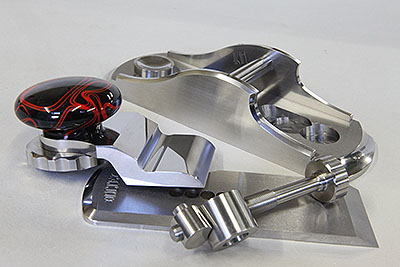
Bridge and lever cap
The lever cap has a recess cut (see photograph above) which engages with the bridge, thus providing further stability without any movement in the palm rest. I choose to use a low finger rest as I believe that this provides a much better feedback in use.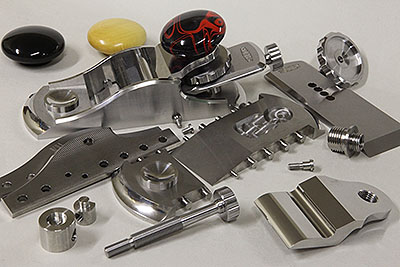
The circular cross section bridge has become a distinctive feature of my planes of late. It is fixed in place using integral riviting - the same technique used to join the sides to the sole which gives superior strength and ridgidity compared to more traditional fixing methods.
Adjuster
The adjuster recess is milled along with the blade bed - both surfaces are in true station, I decided not to fix the adjuster as it only needs to be positioned.
The adjuster will support the rear end of the blade in line with the frog which makes up the blade bed. The adjuster is allowed to rotate and position the blade,
this system was also used on the No.98 (excluding the retaining screw).
With this plane I have returned to integral riveting as first used on the N0.98 (also fabricated from stainless).
The rivets have a small leading chamfer which also helps to prevent splitting when it comes to peining.

Making the A13
Many people who read my blog and visit my instagram and facebook pages enjoy the workshop pictures I post there showing my work in progress.
Some time ago we collected pictures of my last A13 build and published them together under the heading 'Making the A13'.
Although this was never intended to be an exhaustive documentry of a plane build, it does go some way to illustrate the variety of processes and number of hours which
I put into making a plane.
I also tried to show some of the unseen work which goes into my builds, such as the custom tooling, work holding jigs, setting up for milling or
lathe work and of course all the handwork such as filing and sanding.
This article has now been made into a PDF document which you can view on the planes / in depth / making the A13 page.
It is best viewed on larger screens as it is A4 page size and runs to 50 pages in total.

